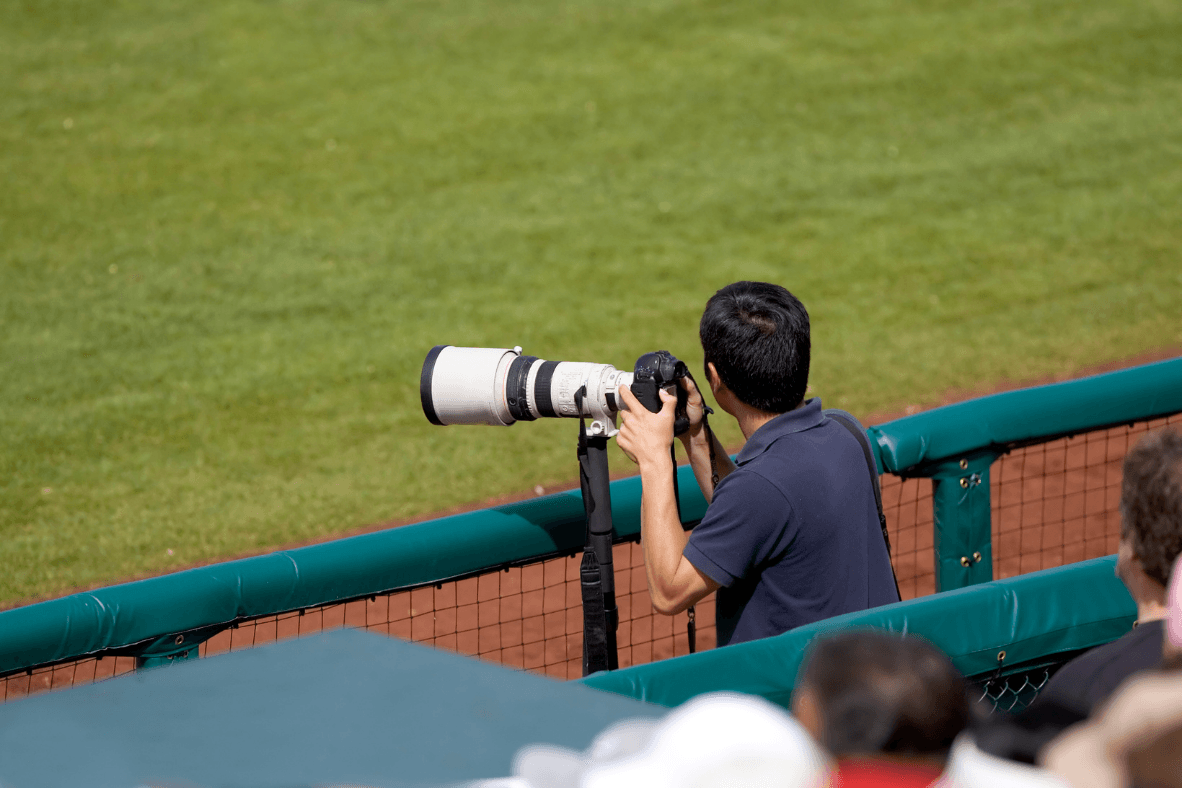Get in touch
The Ins and Outs of Investigative Journalism
Investigative journalism requires a painstaking amount of diligence and perseverance, frequently in the face of a lack of cooperation and information sharing. Because of the challenges involved, more experienced reporters tend to get assigned to this sort of work. When done well, the payoff for the newspaper is a big, fat scoop.
In this video interview and downloadable white paper host Tim Shoults and veteran journalist Barbara Yaffe discuss the ins and outs of investigative journalism.
Barbara is a journalist who has spent more than 40 years living and working in Canada writing on public issues and government. Barbara’s first job was at the Montreal Gazette, but within a year she moved to the Globe and Mail to work in the Toronto newsroom, the Queens Park Bureau and then, the Atlantic Bureau. Barbara was co-recipient of the Roland Michener Governor General’s Award, for a series of articles on children’s services in Ontario.
In 1988 she joined the Vancouver Sun where she has worked as Lifestyles Editor, BC News Editor and finally, a political and business columnist and editorial writer.
In 2004, the Jack Webster Foundation awarded her the Columnist of the Year Award and the same year she won an Award of Distinction from the International Fund for Animal Welfare. In 2013, she was awarded a Queen’s Diamond Jubilee Medal for her journalism work, flowing from a nomination from the Canadian Taxpayers Federation.
Section 1 VIDEO
Lecture 1 The Ins and Outs of Investigative Journalism
Section 2 WHITE PAPER
Lecture 2 The Ins and Outs of Investigative Journalism
Lecture 3 The Ins and Outs of Investigative Journalism - Recap
Section 3 TRANSCRIPTION
Lecture 4 The Ins and Outs of Investigative Journalism
INVESTIGATIVE AND PROJECT REPORTING: INS AND OUTS
Investigative journalism is not for sissies. It usually requires a painstaking amount of diligence and perseverance, frequently in the face of a lack of cooperation and information sharing.
Because of the challenges involved, more experienced reporters tend to get assigned to this sort of work. When done well, the payoff for the newspaper is a big, fat scoop.
Investigative journalism, which can take months or years to do in some cases, usually is directed at uncovering political, criminal or corporate corruption — without having any law enforcement tools at hand.
The Maryland-based Global Investigative Journalism Network describes it thus: “systemic, in-depth and original research and reporting, often involving the unearthing of secrets, often [involving] heavy use of public records and data, with a focus on social justice and accountability”.
This genre of journalism has been going on since, well, since reporters began reporting. But it really took off in the 1970s after the Nixon-era Watergate scandal broke. Suddenly, everyone wanted to be a Woodward or a Bernstein and investigative journalism became a sort of crack cocaine for ambitious journalists.
The first Michener Award, which annually honours the best investigative journalism in Canada, was handed out in 1970. The award is conferred for “public service journalism” and generally targets investigative work. In the U.S., Pulitzer prizes for investigative work have been awarded since 1953.
The recognition usually is well deserved. It is extremely challenging to get at the facts when the key players under ‘investigation’ obviously have a vested interest in not having the public learn about the criminality or immorality that may be involved. And, obviously, reporters cannot do anything unethical or illegal in gathering their information.
Investigative reporters typically rely on anonymous sources who may be whistle blowers and/or data that can be complex and difficult to interpret. Data can include everything from court documents to tax records to corporate financial filings.
Some newspapers require double sourcing of information when undertaking investigative work. News outlets have a variety of policies on the use of anonymous sources, including permitting anonymity once a source’s identity has been verified and authenticated internally.
Broadcast media have taken to distorting voices and/or blurring the faces of on-camera sources who insist on keeping their identities hidden. In some cases, broadcast media will use hidden recording devices. In Canada, payment for information is universally frowned upon.
Investigative reporting can take many forms and involve some occasionally novel journalistic tactics.
For example, as a relatively inexperienced reporter back in the early seventies, Globe and Mail reporter Barbara Yaffe, was asked one frosty Ontario winter to travel to Miami Beach, in a four-day under-cover assignment, to document the spending by a visiting committee of Queens Park politicians who had headed south on the taxpayers’ dime ostensibly to study Dade County’s system of auto insurance.
Yaffe returned to Toronto with a rundown of the hotel and hospitality expenses incurred by the sun-bathing politicians, as well as their recreational activities — by allowing hotel staff to assume she was a secretary travelling with and keeping receipts for the ‘working’ politicians, and giving the MPPs the impression she was a simply a tourist at the hotel.
Globally, investigative media work has exposed organized crime, private military cartels, asbestos companies, climate change lobbyists and details of Iraq and Afghanistan war contracts.
Recently, the Panama Papers presented a huge project for investigative journalists, working to interpret more than 11.5 million leaked documents dating back to the 1970s, related to offshore entities and tax havens.
Close to home, Globe and Mail and reporter Kathy Tomlinson, throughout 2016, did exemplary investigative work exposing the nefarious features of B.C.’s wild-west real estate industry, impressing many readers and undoubtedly securing some future awards for her newspaper. In particular, she brought to light a practice by realtors known as shadow flipping, considered unethical by many and which served to drive up prices in an already overheated property market. http://www.theglobeandmail.com/news/investigations/the-real-estate-technique-fuelling-vancouvers-housing-market/article28634868/
The Vancouver Sun did an intriguing project in 2015 about the Downtown Eastside, exposing a vast array of often-duplicative social programs and helping agencies that serve to attract and essentially trap the city’s addicted and poor in the impoverished neighbourhood.
http://www.financialpost.com/m/search/downtown+eastside+agencies+housing+sites+crowd+downtown/9983274/story.html
The project was written by reporter Lori Culbert and columnist Pete McMartin over a few weeks in the summer of 2014. Because the project’s goals were well defined, because it focused on a single neighbourhood, and because related information was readily available, the work did not consume an inordinate amount of resources. The pieces ran in the Financial Post as well.
http://www.financialpost.com/m/search/downtown+eastside+agencies+housing+sites+crowd+downtown/9983274/story.html
The Downtown Eastside series demonstrates that it is not always necessary to commit endless resources to the completion of a project. For smaller newspapers, the key is to define the project to be undertaken and put boundaries around the topic area so it becomes manageable.
Almost anything can constitute an investigative project. Decades ago, at the Globe, an editor got curious about people’s dental hygiene and a reporter took up the challenge of determining the state of Canadians’ oral health. The reporter scrutinized dental affordability and awareness across the country, using material already on the public record. In the end the project revealed a particular, and alarming, neglect of teeth in the provinces of Quebec and Newfoundland, two provinces where widespread cultural acceptance of false teeth was prevalent.
The 2008 book Beyond the Headlines, by Cecil Rosner explores the history of investigative journalism in Canada. Rosner teaches investigative reporting at the University of Winnipeg.
In the U.S., the nonprofit Investigative Reporters and Editors, Inc. and Brant Houston have produced the Investigative Reporter’s Handbook, now in its fifth edition.
These two books aside, “the literature on investigative journalism practice is remarkably thin,” according to James Hollings, writing on the website of the Global Investigative Journalism Network. Hollings believes this could be because serious investigative journalism only became all the rage since Watergate.
Most journalism courses touch on investigative journalism but rarely can spend the time needed to allow students to get hands-on experience. For a majority of investigative reporters, it becomes something that is learned on the job, in the newsroom.
Some foundations, particularly in the U.S., sponsor journalists’ research efforts, providing grants or stipends that will give a reporter the resources to research his given project. Examples are the Fullbright Program and the Neimen Fellowships. http://gijn.org/resources/grants-and-fellowships/
An assortment of similar fellowships are offered by Canadian organizations. http://www.j-source.ca/article/canadian-journalism-fellowships. Usually the grants are in the range of about $60,000 to $75,000 and give those awarded funds up to a year to complete their work.
In the newsroom, investigative work is carried out in many instances by teams of reporters, whose work is coordinated by an editor.
Teams may also be deployed for large editorial projects, which can be categorized as investigative, or not — depending on how tough it is access the information being sought.
Teamwork is beneficial because it allows more than one person, first, to conceive and define the parameters of the project to be undertaken, and second, to develop the practical strategies and ideas to be deployed in gathering the necessary materials.
Periodic meetings can keep the project on course or shift its parameters if the ongoing research suggests that is necessary.
Most editors understand that both time and money are required to support the level of inquiry that sustains investigative journalism and, sadly, the volume of such research concomitantly is declining as newspaper revenues and staff numbers decline.
A 2016 journalism conference in Toronto highlighted the notion of collaboration between media organizations in an era of dwindling resources. The CBC and Toronto Star, for example, partnered in reporting on the Panama Papers leak.
Publishers would be wise to beg, borrow and steal to find the money to enable their publications to carry out the larger projects because, more than ever, it is such projects and investigative work that can distinguish a newspaper.
Newspapers have taken a large hit from market segmentation and citizen journalism. Some believe dailies and weeklies have become dispensable as other, newer forms of online journalism have proliferated.
Large projects accord newspapers the chance to stand out and show off. Few bloggers, after all, can undertake the sort of research that requires teams of reporters or weeks and months to achieve. Such projects tend to draw on a news organization’s multifaceted capabilities, which can generate “a package” of information that includes news stories, graphics, maps and photographs.
A good series or large project most definitely is a “value-added product” that can draw lots of attention to a newspaper, boost its brand and allow it to snare newspaper awards.
Recap:
• Investigative work or a research project begins with a great idea, and flows from there. Do not let a lack of resources limit you; instead work to narrowly define the parameters a project.
• Projects can benefit from teamwork but also can be carried out by a single focused and energetic reporter.
• While some projects are straightforward, with findings pretty well known at the start, others may require researchers to be open minded and relinquish preconceptions regarding ultimate findings.
• When undertaking projects, it is helpful to find different ways of creatively conveying a story that has features a voluminous amount of material. Use sidebars, maps, graphics and photos to help tell your story.



Modules
Do you work in NewsMedia?
Contact us for more information.
Request Access - Form
Thank you for requesting access to NewsMediaPlaybook.com.
We will review your submission and back to you as soon as possible.
Oops, there was an error with your request.
Please try again later.
All Rights Reserved | BCYCNA







